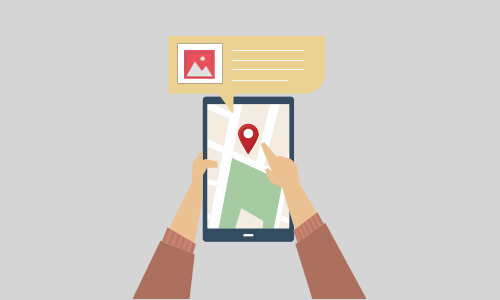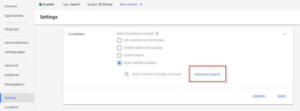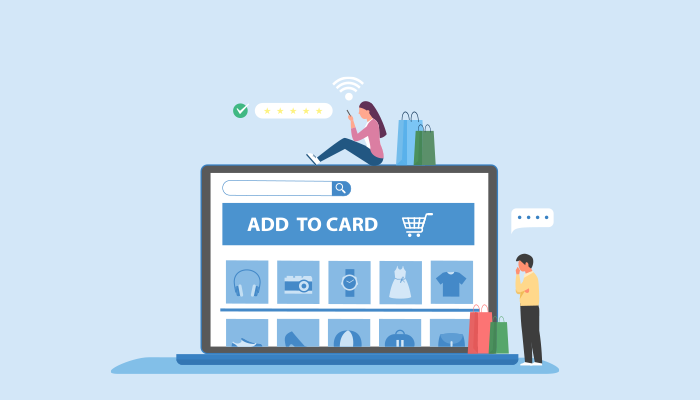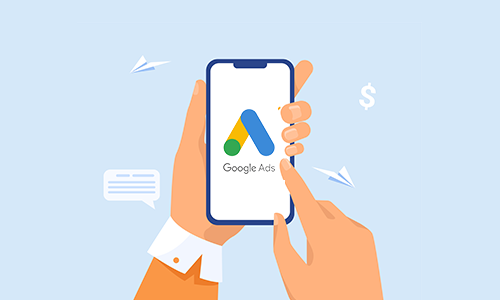The most surprising trends we see in digital marketing is the search for businesses or services “near me.” The global pandemic has only slightly slowed the growth of these opportunities. These “hyperlocal” advertisers are not focusing too narrowly or unwittingly sabotaging themselves, they are targeting prospective customers right where they are – at home, at work, at local stores in their neighborhoods.
Let us take an in-depth look at hyperlocal marketing. We will examine what hyperlocal marketing is, why it can be so effective, and most importantly, how you can do it across your paid search and paid social campaigns.
What is Hyperlocal Marketing?
The process of targeting prospective customers in a highly specific, geographically restricted area, sometimes just a few blocks or streets, often with the intention of targeting people conducting “near me” searches on their mobile device is called Hyperlocal Marketing.
For example, let’s say you’re looking for a new novel. You visit the nearest bookstore but you discover that they are completely sold out. Then you take out your mobile device and conduct a “near me” search for bookstores near your location. You already spent twenty minutes circling the block looking for a parking space, so you are not exactly keen on getting back in the car and driving to another store – you want a bookstore you can walk to, right?
In a nutshell, this is the essence of Hyperlocal Marketing.
Why launch Hyperlocal Marketing Campaigns?
Hyperlocal marketing’s primary objective is to drive foot traffic to physical locations and capitalize on near-me searches, which have strong commercial potential.
Many people think that hyperlocal ads make sense for restaurants and book stores. But you will find it works for lots of other businesses too because a hyperlocal lead is reliably solid. After all, they’re not just searching for businesses selling what they are looking for, but they are looking for businesses that sell near them. By putting your business in high-quality hyperlocal SERPs, you are making your presence known to your online customer base. You can attract foot traffic and local awareness by targeting extremely specific areas, even if you are operating with limited hours or occupancies.
Also, many users now expect local search results to take precedence over wider results, even when they do not explicitly state they are looking for local results. Google suggests that local searches without “near me” or other location qualifiers have grown 150% faster than searches including “near me,” revealing that many users now expect Google to automatically take their location into account when serving results.
What ranking signals matter most for hyperlocal search results?
A comprehensive Google my business listing – Google My Business listings are where Google sources most of the information it serves to users in local searches and Google Maps results. This includes details that appear in listings of individual businesses in Maps results, such as opening hours and address, as well as the Graph-style data points such as when a business is busiest.
Customer Reviews – When people search for a local business, reviews highly determine their decisions, for example, if you check out the reviews of local businesses before making the decision to shop there, you can be sure that your customers are doing exactly the same thing.
Customer reviews are believed to be one of the most important ranking signals in local SEO, which makes them crucially important if you’re going the hyperlocal route.
Distance – For hyperlocal SEO, distance is a strong ranking signal.
Google My Business listing for data such as categorization, keyword relevance, and user reviews – account for almost 1/5th of how Google prioritizes local search results. It’s worth noting that the distance between the user and a local business is also considered a My Business ranking signal.
How Do I Set Up a Hyperlocal Marketing Campaign?
To get started with hyperlocal marketing in Google Ads, make sure that your geolocation settings are configured correctly.
To do this, navigate to the Campaigns tab within your Google Ads account, select the campaign you want to modify, then click “Settings”. From here, click the downward chevron in the Locations tab, then select “Advanced search.”
Click the “Radius Targeting”.
Now decide on the central point of your radius targeting. For example – most companies would use the physical location of their store as their central point. You can do this by entering the address of your radius’ center directly into the search field in the radius targeting dialog box.
This is a great start with our tight geolocation radius targeting, but that alone isn’t enough – you also need to think about your keywords and the intent of the people who may be searching for products or services like yours.
Using our targeted location radius settings above as an example, we are now looking at individual neighbors, not entire cities or metropolitan areas. Already, this gives us a great starting point for our hyperlocal keyword research. For example, a plumber conducting a hyperlocal campaign may want to bid on “plumber back bay” or “emergency plumber shawmut” as keywords if they’re trying to attract more business from these two neighborhoods.















